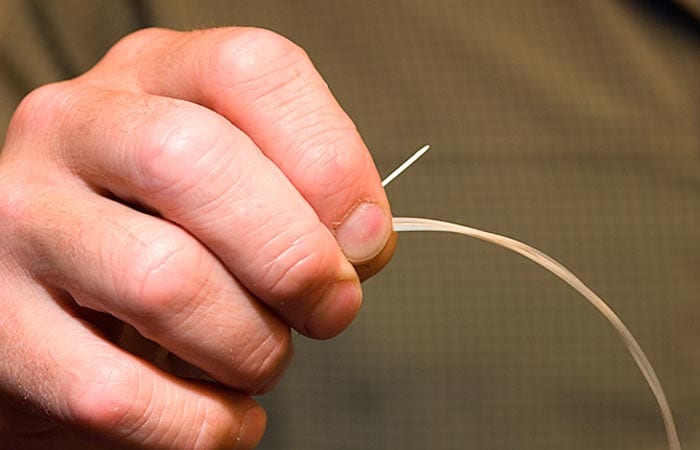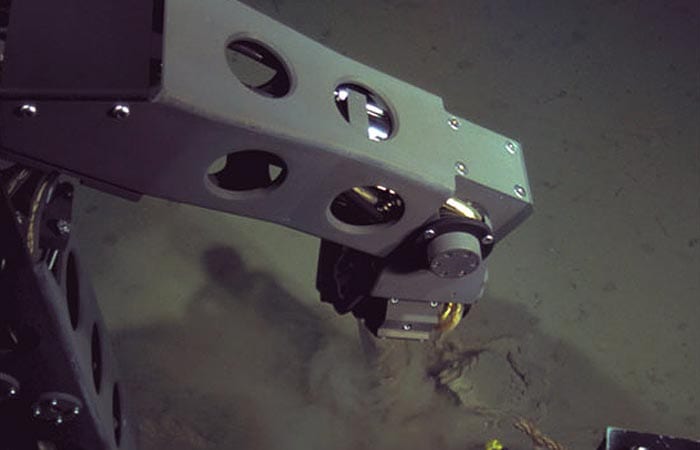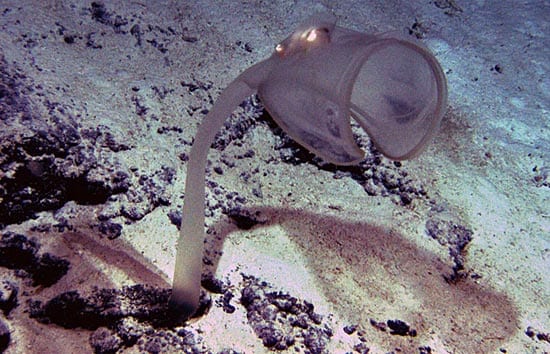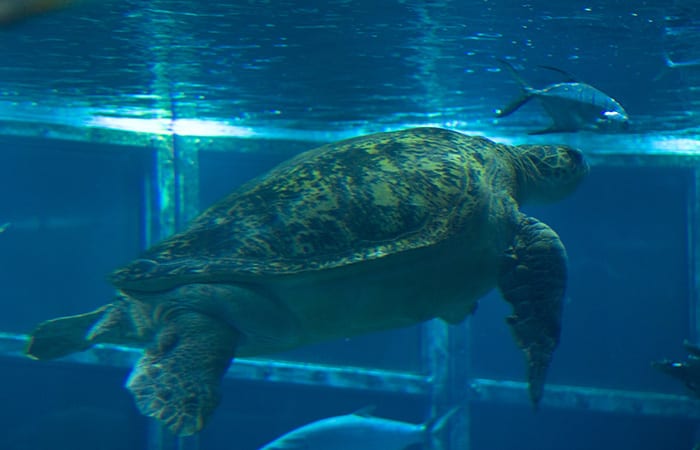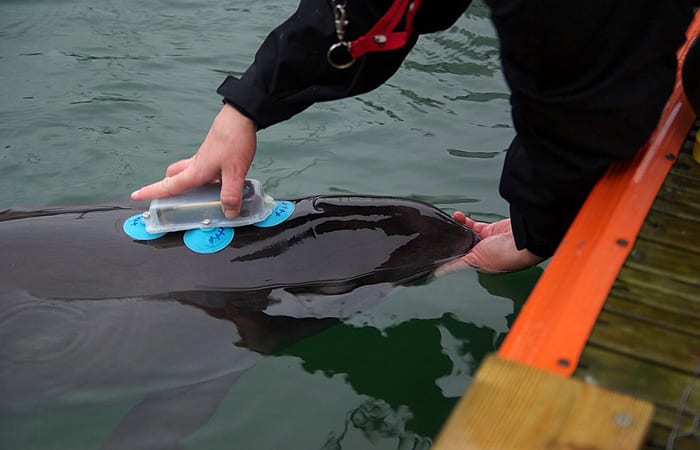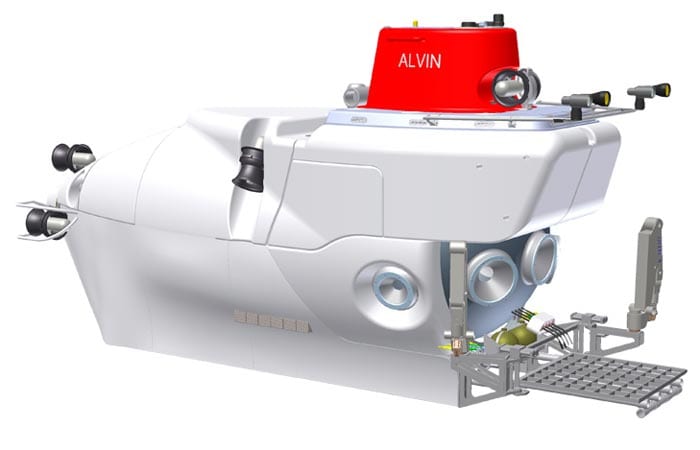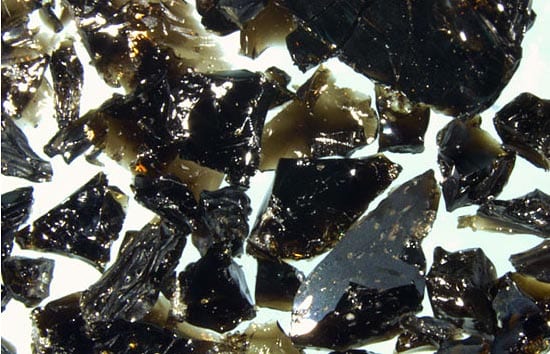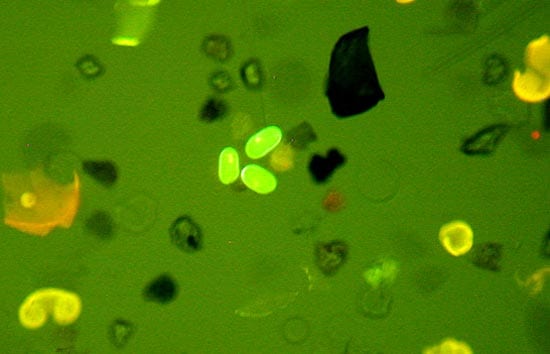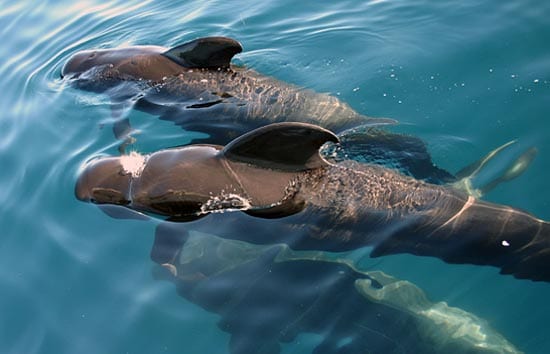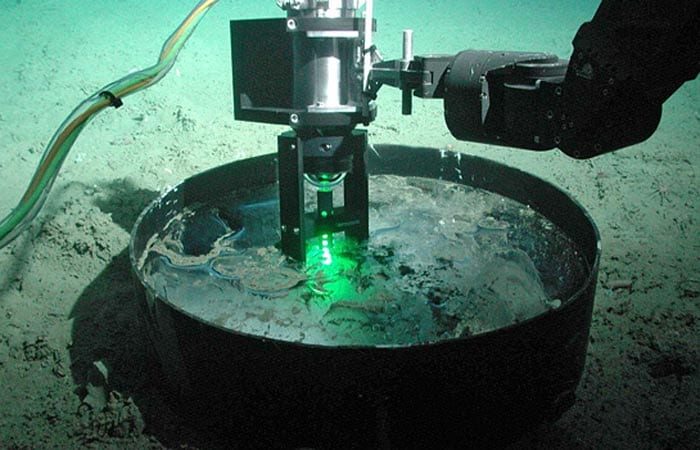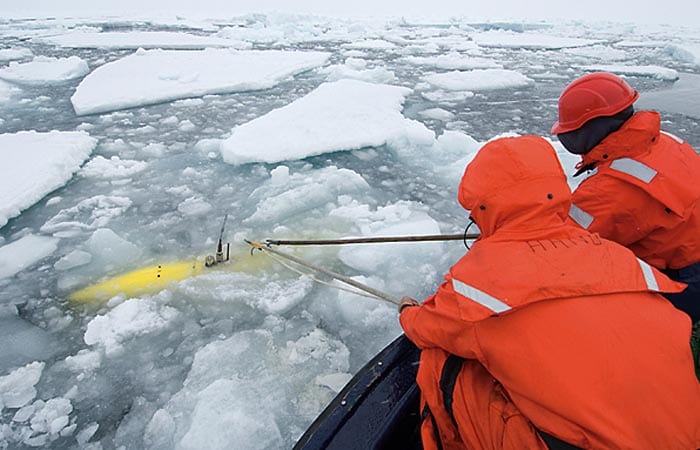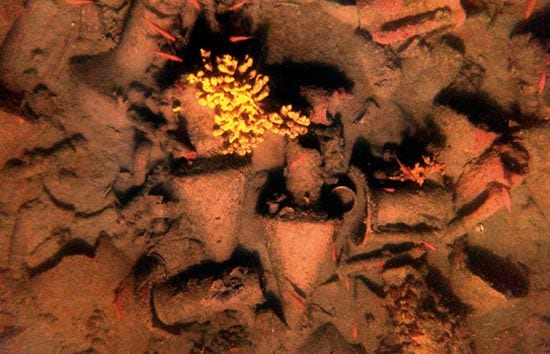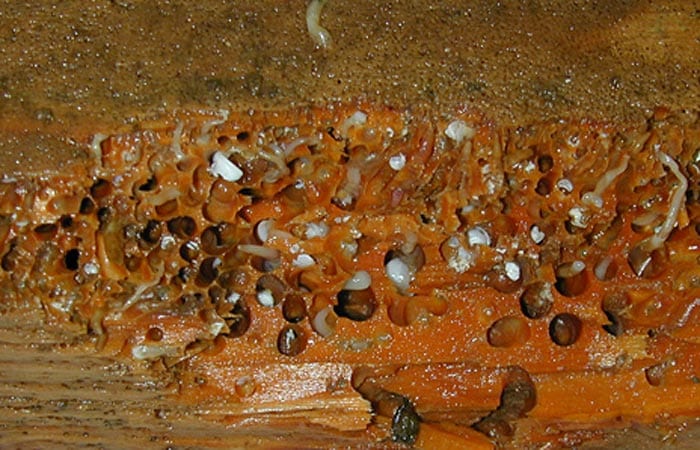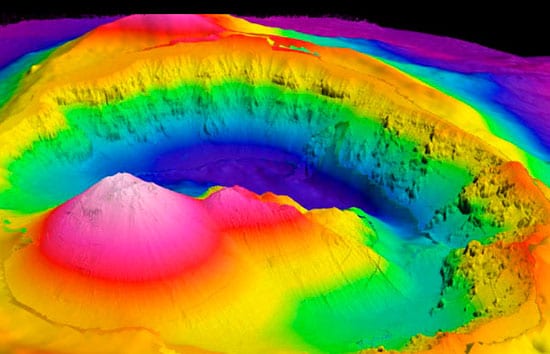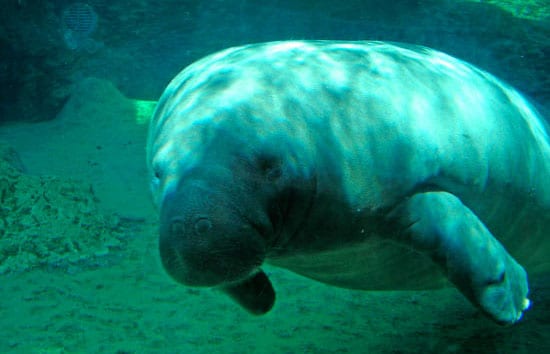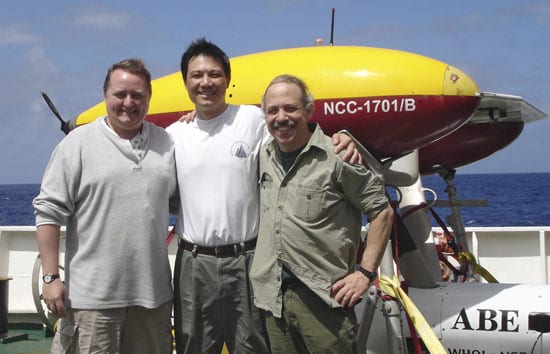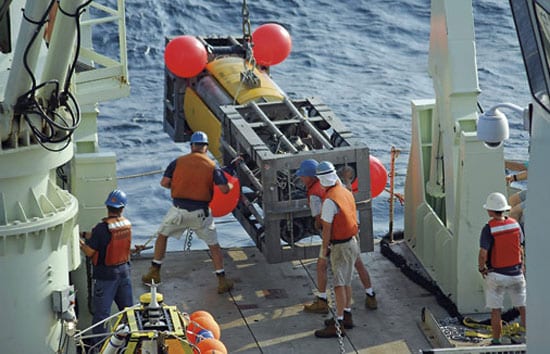Applied Ocean Physics & Engineering
2,000 Batteries Under the Sea
Daniel Gomez-Ibañez has been an engineer at Woods Hole Oceanographic Institution for three years. Much of that time, he has spent developing large batteries for underwater vehicles, including Nereus. [Second…
Read MoreMiles Under the Sea, Hanging on by Hair-Thin Fiber
Andy Bowen has been developing robotic deep-sea technology for many years, starting his career at Woods Hole Oceanographic Institution in the 1980s by working on Jason Jr., the small tethered…
Read MoreNereus Soars to the Ocean’s Deepest Trench
It took a village of engineers to build a completely new type of unmanned deep-sea robot that can reach the deepest part of the ocean. On May 31, 2009, a…
Read MoreJason Meets the Carnivorous Sea Squirt
Tito Collasius, an engineer at Woods Hole Oceanographic Institution, has witnessed some of oceanography’s more celebrated moments, including the discovery of the Titanic and the eruption of undersea volcanoes. But…
Read MoreA Deep-sea Chemical-Sniffing Bloodhound
<!– –> Researchers can learn complicated things from some of the simplest animals in the ocean. Case in point: Rich Camilli’s work on sponges near Aquarius, an undersea laboratory 63…
Read MoreThe Turtle and the Robot
Stephen Licht built an unusual underwater robot with a curious name. With a wink toward James Joyce, he named it Finnegan, because he was particularly interested in studying the wake…
Read MoreA Tag Fit for a Porpoise
In 2003, Stacy DeRuiter arrived as a graduate student at Woods Hole Oceanographic Institution (WHOI), where a new device developed at WHOI was sparking a revolution in marine mammal research:…
Read MoreBuilding the Next-Generation Alvin Submersible
Three times geologist Adam Soule has climbed inside the deep-diving submersible Alvin and headed to the seafloor. Geochemist Susan Humphris stopped counting after 30 dives. Dan Fornari, who studies deep-sea…
Read MoreHistorical Formulas Sealed Behind a Wall
Deeply Submerged Volcanoes Blow Their Tops
A research team led by Woods Hole Oceanographic Institution (WHOI) has uncovered evidence of explosive volcanic eruptions on the Arctic Ocean seafloor almost 2.5 miles deep. Scientists did not think…
Read MoreResearchers Successfully Forecast 2008 Red Tide
A research team led by scientists at Woods Hole Oceanographic Institution (WHOI) successfully predicted the widespread harmful algal bloom that materialized this year in New England coastal waters. The forecasting…
Read MoreNew Robot Sub Surveys the Deep off the Pacific Northwest
Scientists and engineers from WHOI and the University of Washington have successfully completed the first scientific mission with Sentry, a newly developed robot capable of diving as deep as 5,000 meters into the ocean. The vehicle surveyed and helped pinpoint several proposed deep-water sites for seafloor instruments that will be deployed in the Ocean Observatories Initiative.
Read MorePilot Whales the ‘Cheetahs of the Deep Sea’
Scientists tag whales and find they sprint-dive to forage, hunting like undersea cheetahs.
Read MoreCan’t Bring Deep-sea Samples Up? Send a Lab Down.
Much of what is surprising about the deep ocean results from the extraordinary conditions found there—frigid temperatures, crushing pressure, unusual chemical and biological processes, and the complete absence of sunlight.…
Read MoreIn Computer Models and Seafloor Observations, Researchers See Potential for Significant 2008 “Red Tide” Season
Researchers from WHOI and North Carolina State University are preparing for a potentially big bloom of harmful algae in New England waters this spring. A combination of abundant beds of algal seeds and excess winter precipitation have set the stage for an Alexandrium bloom similar to the historic “red tide” of 2005. Weather patterns and ocean conditions over the next few months will determine whether this year’s algal growth affects coastal shellfishing.
Read MoreArctic Voyage Tests New Robots for Ice-covered Oceans
In the summer of 2007, an international team led by scientists at Woods Hole Oceanographic Institution sailed to the Arctic Ocean aboard the Swedish icebreaker Oden. Their missions: to test…
Read MoreDNA in Shipwrecked Jars Reveals Clues to Ancient World
Scraping inside clay jars recovered from a 2,400-year-old shipwreck, two researchers found DNA fragments that revealed the jars’ long-disappeared probable cargo: oregano, olive oil, and wine. The genetic technique, developed…
Read MoreHappy as a (Newly Discovered) Clam
Aboard a research ship in 1997, Janet Voight was amazed when she examined a small log that researchers just happened to trawl up from the bottom of the sea: It…
Read MoreDennis McGillicuddy Receives 27th Annual Rosenstiel Award
The University of Miami?s Rosenstiel School of Marine and Atmospheric Science has selected Dennis J. McGillicuddy, Jr., Ph.D., as recipient of the 2008 Rosenstiel Award. McGillicuddy, a senior scientist in the Department of Applied Ocean Physics and Engineering at WHOI is a pioneer in the study of physical-biological interactions in the ocean.
Read MoreRobot Paints Stunning Map of Deep-sea Volcano
Painting with sonar, each brushstroke a “ping” of sound reflected off the seafloor, the robotic underwater vehicle called ABE created a masterpiece of a landscape—one that is submerged about a…
Read MorePut the D-tag on the Manatee
When boats hit manatees, the outcome is often grim. Bones are broken and skins sliced. Despite regulations designed to prevent collisions, dozens of manatees in Florida continue to be injured or…
Read MoreCSI Deep Water: Finding Invisible Clues to Ancient Greek Culture
Like forensic investigators hunting for strands of DNA at a crime scene, Maria Hansson and Brendan Foley have found a way to detect archaeological clues that are invisible to the naked eye. Hansson and Foley have developed a genetic technique to determine the original contents of amphoras, the ceramic vessels often used for transporting and storing goods in the ancient world.
Read MoreBuilding International Bridges to Explore Ridges
In January 2007, WHOI scientists Jian Lin, who grew up in China, and Chris German, who grew up in England, became the new chair and co-chair of an international organization…
Read More

